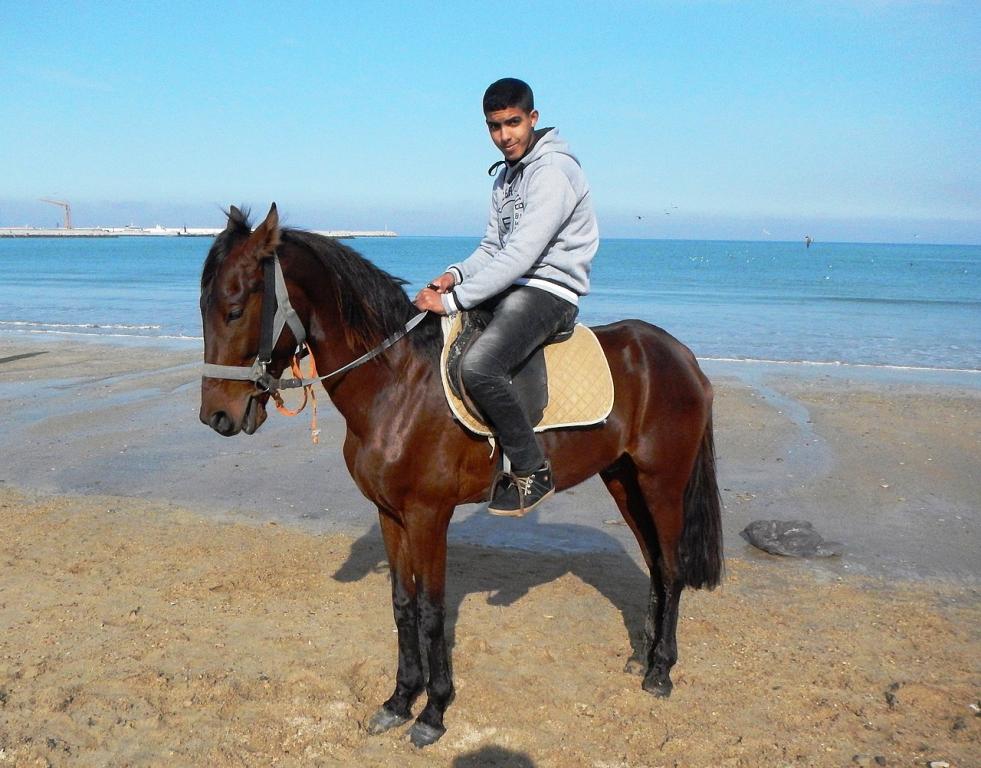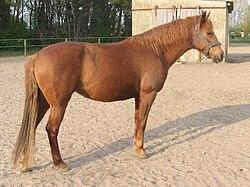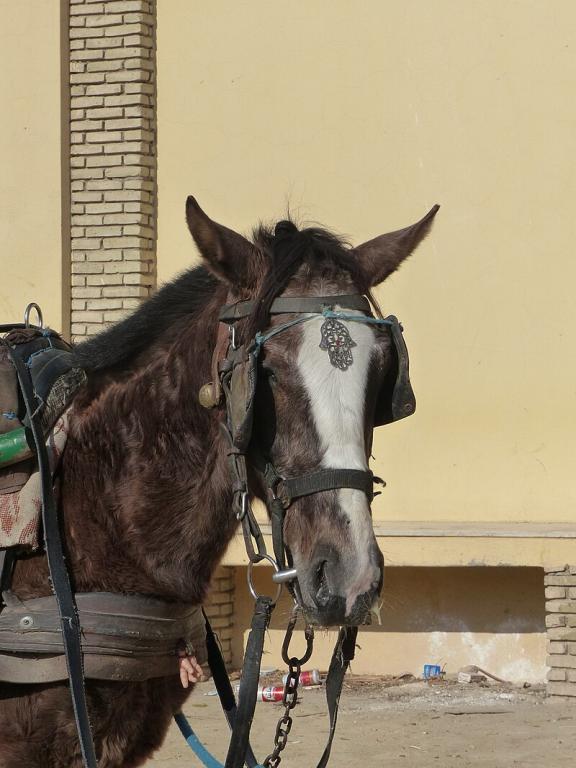
Continent: Africa
Country: Morocco
Weight: 400 – 500 kg
Height: 145 – 155 cm



The Barb horse originates from the Maghreb, primarily from Morocco, Algeria, Tunisia, and Libya. It is closely linked to the nomadic Berber civilizations, who bred and selected it since antiquity for its endurance, frugality, and mobility over long distances.
Adapted to the arid and mountainous conditions of North Africa, the Barb was shaped by rigorous natural selection, without external blood influence for centuries.
It played a central role in military conflicts, caravan journeys, and local equestrian traditions (such as fantasia and tribal breeding). It is also one of the ancient foundations of the Arabian horse, and has greatly influenced several European breeds, notably the Andalusian and Lusitano, through crossbreeding during periods of conquest.
The Barb horse is primarily bred in the Maghreb, with major breeding centers in:
– Morocco: regions of Fès-Meknès, Tadla, Chaouia, Marrakech-Safi,
– Algeria: areas of Tiaret, Batna, Biskra, Constantine,
– Tunisia: North-West and Central regions,
– Libya: rural regions in the western part of the country.
In France, breeding is organized around the French Association of the Barb Horse (AFCB), with studs located in Pays de la Loire, Occitanie, Nouvelle-Aquitaine, Bourgogne-Franche-Comté, and Provence-Alpes-Côte d’Azur.
The Barb is also bred in Germany, Switzerland, Belgium, and several other European countries through stud-books recognized by the World Barb Horse Organization (OMCB).
The Barb horse holds major genetic importance in the history of equines. It is one of the foundations of several renowned breeds, including the Arabian, the Andalusian, the Lusitano, and even some lines of the Thoroughbred.
Thanks to its natural hardiness, longevity, balanced temperament, and solid conformation, it has been used for centuries as a genetic enhancer in breeding programs aimed at improving:
– rusticity,
– endurance,
– feed efficiency,
– and functional versatility in saddle and working horses.
Its role is also essential in the creation of the Arab-Barb horse, a historical crossbreed that combined refinement and robustness to meet military and civilian needs in both the Maghreb and France.
Name and Etymology:
The name "Barbe" (French), "Barb" (English), or "Barbary horse" originates from the Barbary States, referring to the northern part of Africa (Maghreb). This geographical term was used to describe any horse coming from that region.
Early Europeans often confused the name with "Berber" (referring to the Imazighen peoples), which led to confusion about the breed’s designation.
Ancient Origins and Diverse Influences:
Native to the Maghreb (Morocco, Algeria, Tunisia...), the indigenous horses—known in antiquity as Equus numidicus—were influenced over time by major lineages brought by the Phoenicians, Greeks, Vandals, and Arabs.
According to several researchers, the breed is the result of crossbreeding between horses from Egypt, Central Asia (such as the Caspian or Turcoman), and southern Iberia.
Golden Age during the Islamic Era:
A preferred mount for Berber and Moorish cavalry, the Barb was used in warfare, hunting, and raids.
It was exported to Europe during the Muslim conquest of Al-Andalus as early as the 8th century, and gained favor among royal courts throughout the Middle Ages.
Colonial Period and Decline:
The Barb was registered in a stud book in Algeria in the 19th century, and was later used in French military stud farms to supply horses for the Spahis cavalry, resulting in a stockier type.
After World War II, its value declined, particularly in the Maghreb, due to modernization, industrialization, and breeding practices that favored aesthetic traits over traditional qualities.
Revival and Modern Recognition :
Rediscovered in the 1970s–80s, the World Barb Horse Organization (OMCB) was founded in 1987, and stud books were reopened in Tunisia, Morocco (originally from 1914), and France (1989).
Today, the breed is actively preserved in the Maghreb and represented in Europe, especially in France.
The Barb horse is known for its gentle temperament and strong bond with humans, inherited from centuries of selection in demanding environments.
Despite its keen intelligence and high sensitivity, it is neither fearful nor difficult.
This horse displays composure, patience, and remarkable adaptability, making it an ideal mount for:
– experienced riders looking for a horse that is responsive yet steady,
– leisure riding or equine-assisted activities,
– and cultural traditions like fantasia, where calmness under pressure is essential.
It also possesses a degree of pride and independence, which requires a respectful and consistent rider. It is not submissive, but will willingly cooperate once a relationship of trust has been established.
The Barb horse is currently experiencing a renewed interest, both in its regions of origin and across Europe.
Thanks to its natural hardiness, versatility, and human-oriented temperament, it is increasingly sought after for alternative and sustainable uses, particularly:
– long-distance trekking,
– equine-assisted activities (such as equine therapy),
– outdoor riding,
– and cultural demonstrations like fantasia.
In France, the actions of the French Association of the Barb Horse (AFCB) and the official recognition of the stud book contribute to a better-structured breeding system and a diversification of opportunities.
On an international level, the World Barb Horse Organization (OMCB) supports the breed by promoting standard recognition, harmonization of breeding practices, and public awareness.
Although the population remains relatively small, the outlook is positive, provided that efforts continue in rational selection, genetic preservation, and economic development.
The Barb horse is known for its natural hardiness and resistance to disease, particularly those related to hot and arid climates. Bred over generations in harsh environments, it shows:
– excellent rusticity,
– resilience to climatic variations,
– and good longevity.
To date, no major genetic predispositions have been identified as specific to the breed. However, like all horses, it may be affected by common health issues such as:
– parasitic diseases if deworming is neglected,
– age-related dental problems,
– or back pain if the saddle is not suited to its relatively straight back.
Thanks to its strong conformation, the Barb is rarely affected by limb alignment issues, and its dry, small hooves require little special care, provided it receives regular farrier attention.
This legendary mount is renowned for its bravery during confrontations with the French army in the 19th century. It remains celebrated in historical accounts as a symbol of loyalty and resistance.